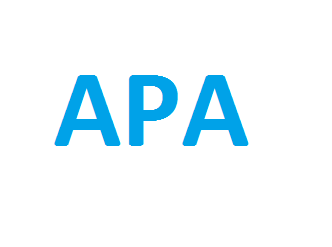
The Academic Perspective Procedia publishes Academic Platform symposiums papers as three volumes in a year. DOI number is given to all of our papers.
Publisher : Academic Perspective
Journal DOI : 10.33793/acperpro
Journal eISSN : 2667-5862
Effect of Different Porosity Ratio on Mechanical Properties of Polycaprolactone and Polylactic Acid Scaffolds
Adem Demir;Mustafa Keser;Fatih Çalışkan
1189
410
Abstract
In recent years, patient-specific solutions and additive manufacturing (AM) have become increasingly important in the treatment of bone defects in studies performed on the medical field. In this direction, additive manufacturing methods use in scaffold fabrication, and many advantages of these systems come to the forefront. Porosity affects the mechanical properties, biocompatibility, and biodegradability of tissue engineering scaffolds. In this study, the effect of different porosity ratios on the mechanical properties of scaffolds for polylactic acid (PLA) and polycaprolactone (PCL) scaffolds was studied. With this fabrication method can be formed entirely 3D interconnected porous scaffolds with pore size. Three different (20%, 35%, and 50%) porosity ratios were determined for both materials, and the mechanical properties of the samples were determined by compression test. The scaffolds fabricated with larger pore size showed lower mechanical performance compared to scaffolds with smaller pore size.
Keywords:
Additive Manufacturing, Porosity Ratio, Polycaprolactone, Polylactic acid, Mechanical Properties, Tissue Engineering Scaffolds
References
[1] ASTM, E. I. Materials, P. Under, A. Service, C. Plastics, and T. A. Prop-, “StandardGuide for Characterization and Testing of Biomaterial Scaffolds Used in TissueEngineered Medical Products,” F2150-13, pp. 1–10, 2013.
[2] A. Kramschuster and L. Turng, “Fabrication of Tissue Engineering Scaffolds,” inHandbook of Biopolymers and Biodegradable Plastics, Elsevier, 2013, pp. 427–446.
[3] V. Tran and X. Wen, “Rapid prototyping technologies for tissue regeneration,” in RapidPrototyping of Biomaterials, Elsevier, 2014, pp. 97–155.
[4] D. W. Hutmacher, “Scaffolds in tissue engineering bone and cartilage,” in TheBiomaterials: Silver Jubilee Compendium, vol. 21, no. 24, Elsevier, 2006, pp. 175–189.
[5] T. Özel, P. J. Bártolo, E. Ceretti, J. D. De Ciurana Gay, C. A. Rodríguez, and J. V. L. DaSilva, Biomedical devices: Design, prototyping, and manufacturing. 2016.
[6] N. Guo and M. C. Leu, “Additive manufacturing: Technology, applications and researchneeds,” Front. Mech. Eng., vol. 8, no. 3, pp. 215–243, 2013.
[7] J. K. Carrow, P. Kerativitayanan, M. K. Jaiswal, G. Lokhande, and A. K. Gaharwar,“Polymers for Bioprinting,” in Essentials of 3D Biofabrication and Translation, Elsevier,2015, pp. 229–248.
[8] J. S. Park et al., “Fabrication and characterization of 3D-printed bone-like β-tricalciumphosphate/polycaprolactone scaffolds for dental tissue engineering,” J. Ind. Eng. Chem.,vol. 46, pp. 175–181, Feb. 2017.
[9] R. Narayan, T. Boland, and Y. Lee, Printed Biomaterials - Novel Processing andModeling Techniques for Medicine and Surgery. 2010.
Cite
-
 @article{acperproISITES2018ID195, author={Demir, Adem and Keser, Mustafa and Çalışkan, Fatih}, title={Effect of Different Porosity Ratio on Mechanical Properties of Polycaprolactone and Polylactic Acid Scaffolds}, journal={Academic Perspective Procedia}, eissn={2667-5862}, volume={1}, year=2018, pages={1243-1248}}
@article{acperproISITES2018ID195, author={Demir, Adem and Keser, Mustafa and Çalışkan, Fatih}, title={Effect of Different Porosity Ratio on Mechanical Properties of Polycaprolactone and Polylactic Acid Scaffolds}, journal={Academic Perspective Procedia}, eissn={2667-5862}, volume={1}, year=2018, pages={1243-1248}} -
 %0 Academic Perspective Procedia (ACPERPRO) Effect of Different Porosity Ratio on Mechanical Properties of Polycaprolactone and Polylactic Acid Scaffolds% A Adem Demir , Mustafa Keser , Fatih Çalışkan% T Effect of Different Porosity Ratio on Mechanical Properties of Polycaprolactone and Polylactic Acid Scaffolds% D 11/9/2018% J Academic Perspective Procedia (ACPERPRO)% P 1243-1248% V 1% N 1% R doi: 10.33793/acperpro.01.01.195% U 10.33793/acperpro.01.01.195
%0 Academic Perspective Procedia (ACPERPRO) Effect of Different Porosity Ratio on Mechanical Properties of Polycaprolactone and Polylactic Acid Scaffolds% A Adem Demir , Mustafa Keser , Fatih Çalışkan% T Effect of Different Porosity Ratio on Mechanical Properties of Polycaprolactone and Polylactic Acid Scaffolds% D 11/9/2018% J Academic Perspective Procedia (ACPERPRO)% P 1243-1248% V 1% N 1% R doi: 10.33793/acperpro.01.01.195% U 10.33793/acperpro.01.01.195
© Academic Perspective 2018. All rights reserved.



